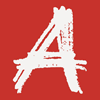The art of parody
Parody is enormous fun. It’s a very good way of finding out about other writers’ styles, although you have to choose someone with a distinctive voice. Hemingway is a good subject, with his absence of adverbs. Chandler and Spillane are good targets as well. Probably the most famous parody of all is Cold Comfort Farm, by Stella Gibbons, which took the mickey out of the accounts of rural life by writers such as Mary Webb, D.H. Lawrence and Thomas Hardy, concentrating on sexual undercurrents, muddy fields and inheritances.
However, I think the greatest gains are to be had writing poetic parodies. You discover new verse forms, new ways of looking at things, new ways to use images, alliteration, metaphors. It’s a bit like the way art students of old used to group around paintings in the National Gallery, and copy them stroke for stroke. You may not be doing something totally original, but you’re learning a technique. I’m a great fan of trying forms that you’ll never use again, as you always discover something new. Although most parodies are amusing, they don’t have to be. I parodied Ted Hughes’ Pike, using the zebra-striped safari FWDs that I saw in Kenya in the nineteen nineties. I wanted to make a point about the voyeurism that causes huge numbers of vehicles to group around the death of a prey animal. You can tell this poem is dated — the photographers are still using film. If you know the original, which you can find here you’ll see how I’ve tried to copy the structure as well as the language and content.
SAFARI BUS
Safari bus, fourteen foot long, ugly,
Misplaced mechanism, black tigering the white,
Photographic predators: the rows of Nikon lenses,
They collect among the zebra like flies.
Or move, in single-file formation
Across a landscape, grey with dust.
Anomalies against an ancient skyline,
Silhouetted by a scarlet sun.
Near the waterholes, hardware at the ready,
Casting long shadows;
Locked onto this week’s lucky break, a lioness.
Or feeding vervet monkeys peanuts.
Snub-nosed predators, windows shut,
Not to be opened on any account;
They raise the roof instead, mushroom style,
The exhaust vibrating gently, spewing grey.
Three we watched yesterday,
Shimmering in the hot sun; then
There were four, then five, then eight -
But by nightfall there were none.
For even now, the darkness belongs to us.
And you know they spare nothing,
Not even each other. Two of them,
Stranded by the side of a rutted road -
Laced together, shredded metal intertwined.
One headlamp stares upward, blind: another
Lies shattered, shards of glass
Growing like desert roses in the dust.
Sometimes they congregate, their meeting place
A clearing, flanked by gnarled giants
Who remember greener times
Before the cattle and the fires.
Bleached and ravaged plain,
It was as wide as Africa. It hid
Us in its desiccated scrub, but let us watch
The ivory face of death: now
They shoot with Ektachrome,
Raking the bush with their telephotos
For what might move, aching to still it
Splashes of dye on resin-coated paper.
Pied kingfishers hover above the water,
Black and white reflections: a larger one
Peels away from the others, changes gear,
And drives slowly towards us, watching.
Do you feel as though it’s cheating, using someone else’s work as a stepping stone? Or do you think it’s a valid learning tool?
Originally published at WeAreOCA.
